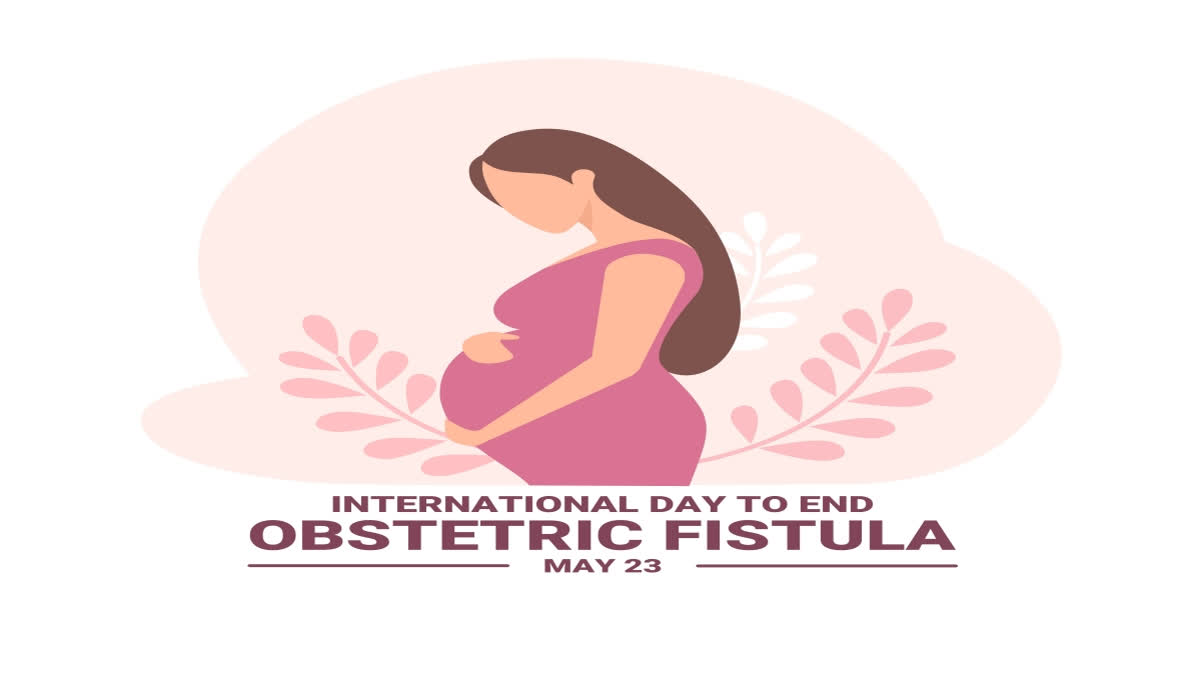Hyderabad: The International Day to End Obstetric Fistula is observed every year on May 23 across the globe. Obstetric fistula is a hole between the birth canal and bladder or rectum, caused by prolonged, obstructed labour without access to timely, high-quality medical treatment.
It leaves women and girls leaking urine, faeces or both, and often leads to chronic medical problems, depression, social isolation and deepening poverty. Ninety percent of pregnancies involving fistula end in stillbirth.
The International Day to End Obstetric Fistula (IDEOF) is a day to draw attention to the devastating injury caused during an obstructed labour; an injury which continues to impact the lives of tens of thousands of women in Ethiopia.
This year marks the twentieth anniversary of the global Campaign to End Fistula and 10 years of commemorating the International Day to End Obstetric Fistula.
History of International Day to End Obstetric Fistula:
The history of International Day to End Obstetric Fistula can be traced to 2003 when U.N.F.P.A. launched the 'Campaign to End Fistula'. In 2013, the United Nations began observing International Day to End Obstetric Fistula, making it an annual campaign. Obstetric fistula is a childbirth-related injury that affects women, especially those in poor economic regions.
Childbirth was typically a home affair, with midwives assisting during the birthing process. It wasn't until the 1920s that hospital births became more common in the United States. However, the process involved questionable methods such as using forceps and anesthesia. In his book called 'Childbirth Without Fear', published in 1942, a doctor named Dr. Grantly Dick-Read outlined the benefits of giving birth without such tools or anesthesia.
In the 1970s, new trends were introduced. Husbands were now allowed to join their wives in the labour room, an act that was previously considered taboo. Furthermore, painkillers such as epidurals gained popularity. Water births and breathing work also became popular. Later, around the early 2000s, c-sections became an alternative to vaginal birth and accounted for a third of deliveries. Today, childbirth is less life-threatening and safer, thanks to improvements in medicine. Nevertheless, problems such as obstetric fistula still need to be tackled and eliminated through increased awareness and universal healthcare.
Theme for International Day to End Obstetric Fistula 2024:
This year's theme, 'Breaking the Cycle: Preventing Fistula Worldwide', underscores the urgent need to address obstetric fistula comprehensively, emphasising equitable access to quality maternal health services, social reintegration, and sustained investment in healthcare systems.
Facts about Obstetric Fistula
- Nearly half a million women and girls worldwide are living with obstetric fistula. Thousands of new cases occur annually
- For every maternal death, 20–30 additional women experience childbirth injuries that significantly affect their quality of life and well-being
- 9 per cent of instances of obstetric fistula result in stillbirths
- Over the past two decades, UNFPA has supported 140,000 fistula repair surgeries; over 12,000 women and girls received social reintegration support between 2018 and 2023
- Midwives provide the majority of first-line maternity care and are key to preventing fistula and other childbirth injuries. In 2021, the global shortage of midwives is estimated at 900,000, of which 500,000 are needed in sub-Saharan Africa alone
20 years on – progress but not enough. Act now to end fistula by 2030
In 2003, United Nations Population Fund (UNFPA) and its partners launched a global Campaign to End Fistula, in line with international targets to improve maternal and newborn health and with the goal of making obstetric fistula as rare in developing countries as in the developed world.
In 2018, the United Nations General Assembly adopted a resolution to end it by 2030. Health systems and communities are falling short in ending obstetric fistula. Gender discrimination and social marginalisation create additional risks, resulting in fistula disproportionately occurring among impoverished, underserved and marginalised women and girls.
Three cost-effective solutions can prevent fistula: timely access to high-quality emergency obstetric and newborn care, trained professionals with midwifery skills at childbirth, and universal access to modern contraception. Health systems can reduce fistula by tracking prevalence, correcting gaps in care and ensuring universal access to a competent health workforce.
National health plans must also address gender discrimination and other factors making women and girls more vulnerable to maternal mortality and disease. Bold political leadership and investment could eradicate fistula. Ambitious partnerships and scaled-up investments are imperative to ending fistula by 2030.
UNFPA leads the global Campaign to End Fistula, a drive to transform the lives of vulnerable women and girls. The 20-year-old campaign represents a global commitment to fistula prevention and holistic treatment, including surgical repair and social reintegration and rehabilitation. Despite progress, elimination by 2030 demands accelerated action, starting now. Obstetric fistula can be prevented and in most cases treated. Reconstructive surgery with a trained, expert fistula surgeon can repair the injury, with success rates as high as 90 per cent for less complex cases.
Obstetric fistula is preventable and it can largely be avoided by:
- Delaying the age of first pregnancy
- The cessation of harmful traditional practices
- Timely access to obstetric care
The prevention and treatment of obstetric fistula contribute to achieving Sustainable Development Goal 3, which is ensuring healthy lives; in this case, improving maternal health.


